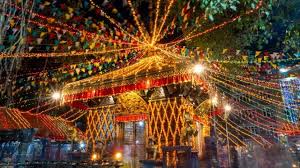The Festival of Lights and Love Tihar
Tihar, also known as Deepawali or Yama Panchak, is one of the most celebrated festivals in Nepal, characterized by vibrant lights, colorful decorations, and heartfelt rituals. This five-day festival usually occurs in October or November, honoring various animals and culminating in the worship of the goddess Laxmi, the deity of wealth and prosperity.
Day-by-Day Celebrations
Day 1: Kag Tihar (Crow Day)
The festival begins with Kag Tihar, dedicated to crows, which are considered messengers of death. Families offer food to crows, inviting them to bless their homes and bringing messages from departed souls.
Day 2: Kukur Tihar (Dog Day)
The second day celebrates dogs, revered for their loyalty. Families adorn their pets with garlands, apply tika on their foreheads, and provide special treats, acknowledging their role as protectors and companions.
Day 3: Gai Tihar (Cow Day) and Laxmi Puja
The third day honors cows, symbols of prosperity and motherly love. Cows are bathed, adorned with garlands, and worshipped. This day also features Laxmi Puja, where families clean and decorate their homes with lights, oil lamps, and colorful rangolis to welcome the goddess of wealth.
Day 4: Govardhan Puja (Ox Day)
On the fourth day, oxen are worshipped for their hard work in agriculture. Farmers prepare offerings, and in some regions, the day is celebrated with Govardhan Puja, recognizing the mountain that Lord Krishna lifted to protect villagers from rain.
Day 5: Bhai Tika (Brother's Day)
The final day, Bhai Tika, is a heartfelt celebration of the bond between brothers and sisters. Sisters perform rituals for their brothers' long life and prosperity, applying tika and garlands while brothers reciprocate with gifts and promises of protection.
Cultural Significance
Tihar is not just a festival; it embodies love, respect, and gratitude towards animals and family. It fosters unity and strengthens bonds among family members and the community. The festival’s colorful lights and decorations symbolize the victory of light over darkness, joy over despair.
Conclusion
Tihar is a beautiful reminder of the values of love, respect, and gratitude in Nepali culture. With its lively celebrations and heartfelt rituals, it brings families together, creating lasting memories and fostering a spirit of togetherness and joy. The festival not only honors animals and deities but also emphasizes the importance of familial bonds and community spirit.





0 comments
Write a Reply or Comment